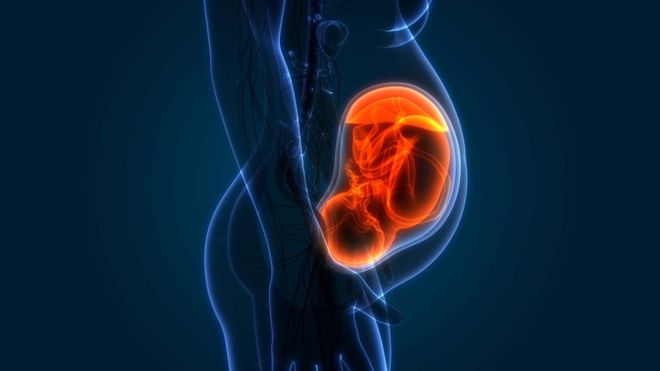Particles of black carbon – or soot – can cross the placenta, a study has found.
The Nature Communications research is the first direct evidence the particles can get into the part of the placenta that feeds the developing fetus.
It could be the first step to explaining why high pollution is linked to an increased risk of miscarriage, premature birth and low birth weights.
Experts said women could take measures such as avoiding busy roads.
But they warned tackling air pollution could be achieved at a “policy level” only.
How the placenta works
The placenta is made up of:
- the fetal placenta, made from the same tissue that forms the fetus
- the maternal placenta, made from tissue from the mother’s uterus
Oxygen and nutrients cross from the maternal placenta to the fetal placenta and are then carried to the fetus via the umbilical cord.
Waste products from the fetus, such as carbon dioxide, pass back the other way.
In-between is a semi-permeable membrane, made up of placental tissues
The scientists in this study looked at placentas from five pre-term and 23 full-term births.
Using high-resolution imaging, they found black carbon particles on the fetal side in each of the placentas studied.
The researchers suggest the particles travel from the mother’s lungs to the placenta.
‘Plausible mechanism’
Writing in the journal, the scientists, from Hasselt University, in Belgium, led by Prof Tim Narwot, said: “Our results demonstrate that the human placental barrier is not impenetrable for particles.
“Further research will have to show whether the particles cross the placenta and reach the fetus” and if that “represents a potential mechanism explaining the detrimental health effects of pollution, from early life onwards”, they added.
“This is the beginning of showing that this is a ‘plausible mechanism’ that could be causing these effects.”
Andrew Shennan, professor of obstetrics at King’s College London, said: “Small particles, such as through smoking, can cause considerable disease related to the placenta and these findings of particles in the placenta are a concern.
“Their possible effects on the baby and mother warrant further investigation.”
What can pregnant women do?
Both experts accept pregnant women cannot change the environment where they live.
Prof Grigg said: “Women shouldn’t be too paranoid about walking down the street but they could be thinking about how they could reduce their exposure.”




